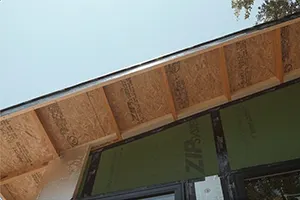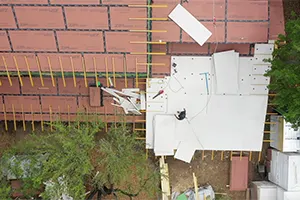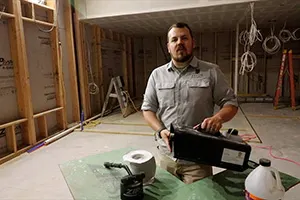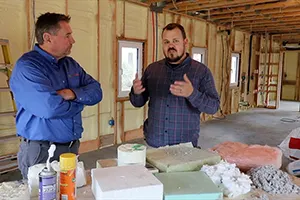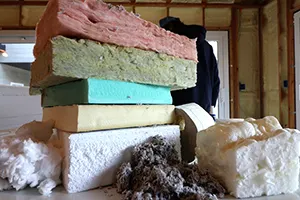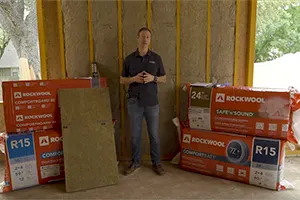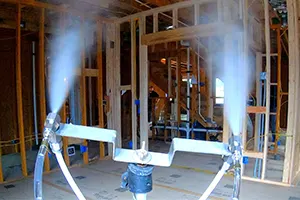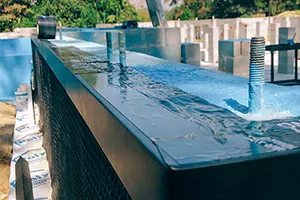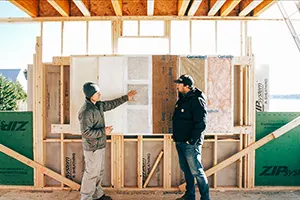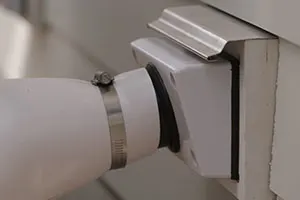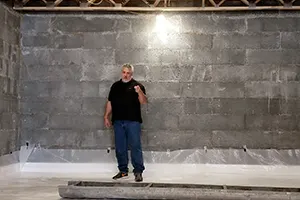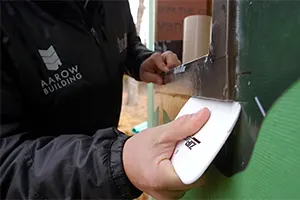What do you do when you need to insulate, but the siding is exposed? In this video, Matt Risinger, master builder, discusses a common remodel problem. Risinger shows us a remodel where the siding was to be kept on the house, but in the demo phase, it's apparent that the tar paper behind it is in bad shape. Discussing the challenge with the builder, the house was built in 1949 and the original siding was to be kept for budge and design considerations. It was clear that the tar paper was compromised and sometimes non-existent. There was also no insulation in the cavities previously. One option is to have the bare wood in the back and stuff it with insulation and air seal it, however the siding that lasted 70 years would suddenly have very different conditions. It would no longer be able to dry to the back side and interference might make it die in 10-15 years. We would see rotting, cupping and paint films would not last long. The solution is to create an air gap and then an air barrier and then do insulation. On the 2 x 4 walls there will be the air gap, then the air barrier with a small area for our insulation, which will be closed cell foam. On this project there is a traditional attic with insulation on the flat. It was important to get air flow into the cavity behind the wood siding. Drilling down through the 2 x 4 bottom plate to the crawlspace to get airflow from the crawlspace into the cavity. Air flow would also need to go out. Again, drilling the top plate, there was traditional blown-in insulation, so the cavity was lined with a scuba snorkel to provide airflow, but also to get above the insulation. Use bug screen for any air holes. Hammer tack it down and use boric acid in the cavity for extra protection. To create a gap behind the siding use Dorken Delta Dry, a polyethylene mat with that egg crate Shape. It won't compress when the insulation is pushed in, maintaining the air gap behind the siding. Then add the air barrier and a water barrier, using Dorken Delta Vent S, typically used as an exterior house wrap. Watertight and air tight, it's vapor-permeable. In this case, it is cut a little bigger than the cavity so that there is an inch or two for stapling all the way around. Using a closed-cell insulation, with an R-value of 7 per inch. Two other options include a poor man's spray foam, which is taking a sheet of rigid foam and cut it shy of the cavity then come in with a can of foam and foam it in place. Another option is rockwool. If using an air permeable insulation such as rockwall, make sure your house wrap is taped to the studs, making sure an airtight cavity is created and there isn't vapor condensing in the back of the sheetrock. There are original wood windows house that will be saved and not replaced. Creating an air gap behind them is a little trickier. By drilling a and a hole in the header and sliding a U-shaped piece of Delta Dry, that will keep the spray foam from filling the cavity. At this point, use a can spray foam with minimal expansion.

 Share on facebook
Share on facebook Tweet
Tweet Email
Email Share on Linkedin
Share on Linkedin



